Three Cameras, One Model
A Canon EOS 30V, 5DSR, and OM System OM-1 walk into a bar...
In the spirit of celebrating at every possible moment on this new journey of mine, I present for your enjoyment another milestone: working with a previous model for a second time. I had no expectation to see Niana (@nianavirgis), this curvy Indonesian lass, again so soon, but here she is. In fact, I had instead been expecting a friend of hers (the one who apparently doesn’t really speak English, if you read the writeup for Niana’s first shoot), who didn’t end up making her planned trip to Hong Kong.
I’m taking Niana’s return as a compliment – she reached out to me when she knew she was coming back and offered to work together again. I realize that I’m paying her, so it is not the height of flattery per se that she’s back again, but she is at least proof that working with me isn’t deal-breakingly off-putting. It’s the little things.
A quick sidebar and shout-out to the women like Niana who do this kind of work, because not all photographers end up on the call-back list. Earlier on the day of our shoot, she had to deal with an extremely last-minute cancellation from another photographer, who then blocked her when she expressed dissatisfaction with his behavior (she was already on the way to the venue when he cancelled.) After our shoot, she intended to walk by herself and with her suitcase to the location of the next one, a good 20 minutes away. When I found out that this was her plan, I decided to walk with her to make sure she at least got to her next shoot safely. This isn’t unusual for working models! They often travel by themselves, arranging and coordinating shoots on their own, sometimes getting hassled by immigration on the way in (a young woman traveling alone must be up to something), other times being treated unprofessionally by photographers once they’re there. Three cheers for these intrepid women, I say.
While it was great to have a model come back to work together again, I also felt an obligation to change things up and try a notably different kind of shoot the second time around. Our first one was very standard fare – her hotel room for the venue and my usual two camera/two lens combination. I ambitiously decided to change every single one of those previous conditions, so I booked a new studio room and brought a very different loadout of camera gear.
All of these changes posed potential challenges. The room, first of all, while it looked great in photos on the studio’s website, appeared not to have any strong sources of natural lighting. This turned out to be true; in fact the room was entirely lit by artificial light sources of varying temperatures and intensities. After shooting in the dark, this is probably the next worst lighting situation for me to work in.
And then there were my camera and lens selections, both of which compounded the difficulties. Instead of my trusty modern mirrorless workhorses, I reached for a 12-year-old Canon SLR (the 5DSR) and a 20-year-old Canon 35mm film camera (the EOS 30V), neither of which I had all that much experience using. These were not, in hindsight, great choices for this situation. (I did actually have one of my M43 bodies along with me, with a new Sirui cinema lens, but I only used it for about the last 10 minutes of the shoot.)
Just to defend myself for a moment, the 5DSR is still pretty good in lower light situations, and I had a roll of Kodak Portra 800 loaded into the 30V, which I shot at 640 (overexposing slightly). I also had two fast lenses with me, the EF 24mm f/1.4L and TTArtisan 75mm f/1.5. You read that correctly – I shot this entire session with two focal lengths, three if you count the 20mm Sirui at the end. (If you need a visual cue to sort out which camera shot each photo: really grainy ones = film, widescreen = the OM-1 and Sirui, all others = the 5DSR with the 24 or 75mm.)
I’ll say it plainly: these were, like… not great ideas. There wasn’t enough light for stable hand-held shooting with Portra 800, nor were the temperatures of the lights appropriate for its color profile. What I got back from the lab was a roll of 36 generally dark, grainy, often out-of-focus frames. Even though I had the 75mm available (both camera bodies and lenses are EF-mount), I shot the entire roll of Portra with the 24mm, just as I did for Ana’s second shoot. There’s a full discussion of this lens choice in that post, if you find this a bizarre decision!
The 5DSR was a little bit more successful? Question mark? I was at ISO 800, shooting both lenses at or close to wide open, and still had issues with camera shake from the shutter speeds. Most of this is user error – I’m so used to shooting with modern mirrorless cameras that I’ve forgotten how these paleolithic SLRs work (or don’t work, as it were). There’s no image stabilization to be found in either camera or lens, and their comparatively rudimentary autofocus systems aren’t easy to use in lower light, even with extremely bright lenses. To make things even worse, the TTArtisans lens (which renders beautiful images when used properly) is manual focus, and SLRs have minimal in-camera gadgetry to assist in focusing. The predictable result? A bunch of very high resolution, very useless blurry images.
I could go on; suffice it to say that this experience did not make me nostalgic for the days of SLR photography. I think I’ll do a longer writeup about this experience for the prose part of the site, so keep your eyes peeled for that surely provocative analysis. Anyway, Niana was a good sport, and I did end up with some images that I think are not terrible, given the way I handcuffed myself on this one.
Upon reflection, I think I tried to get a little too cute with this shoot. I’m reminded of the immortal line from Spinal Tap - “It’s such a fine line between stupid and clever.” I’ll leave it to you the audience to decide for yourselves whether I flew too close to the sun on this one. I think I have, at least, learned some valuable lessons for future such experiments… but we’ll see.


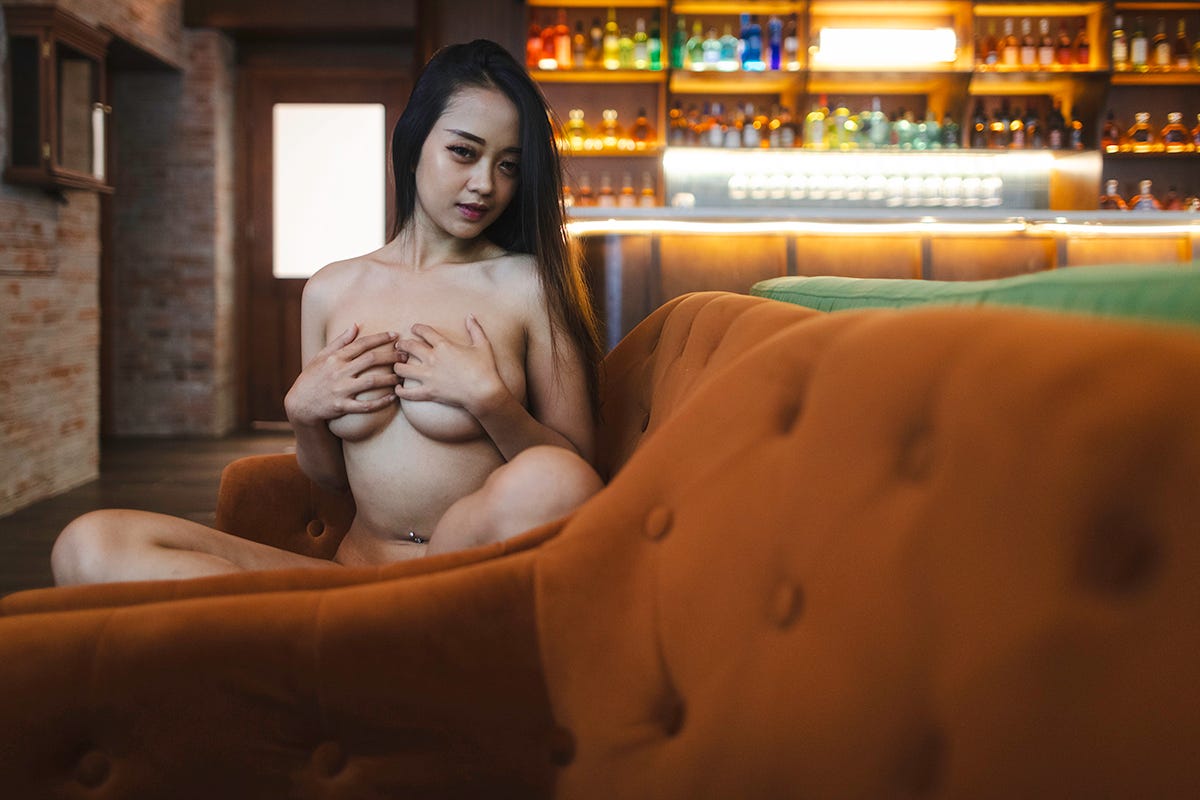
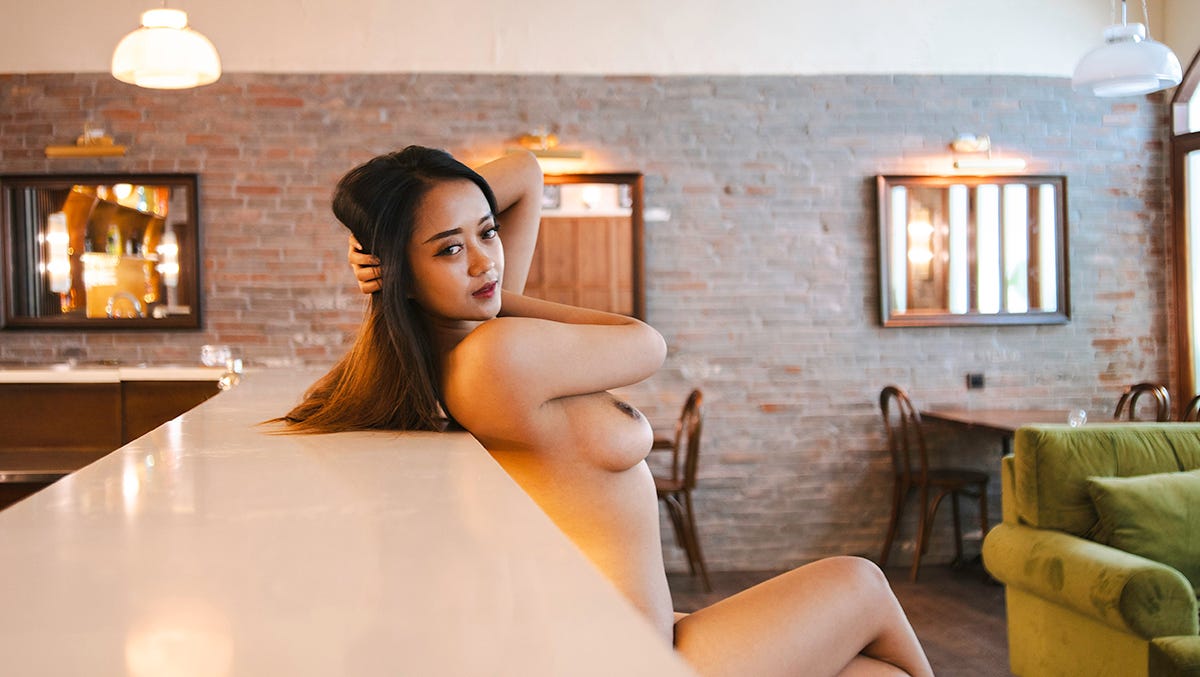
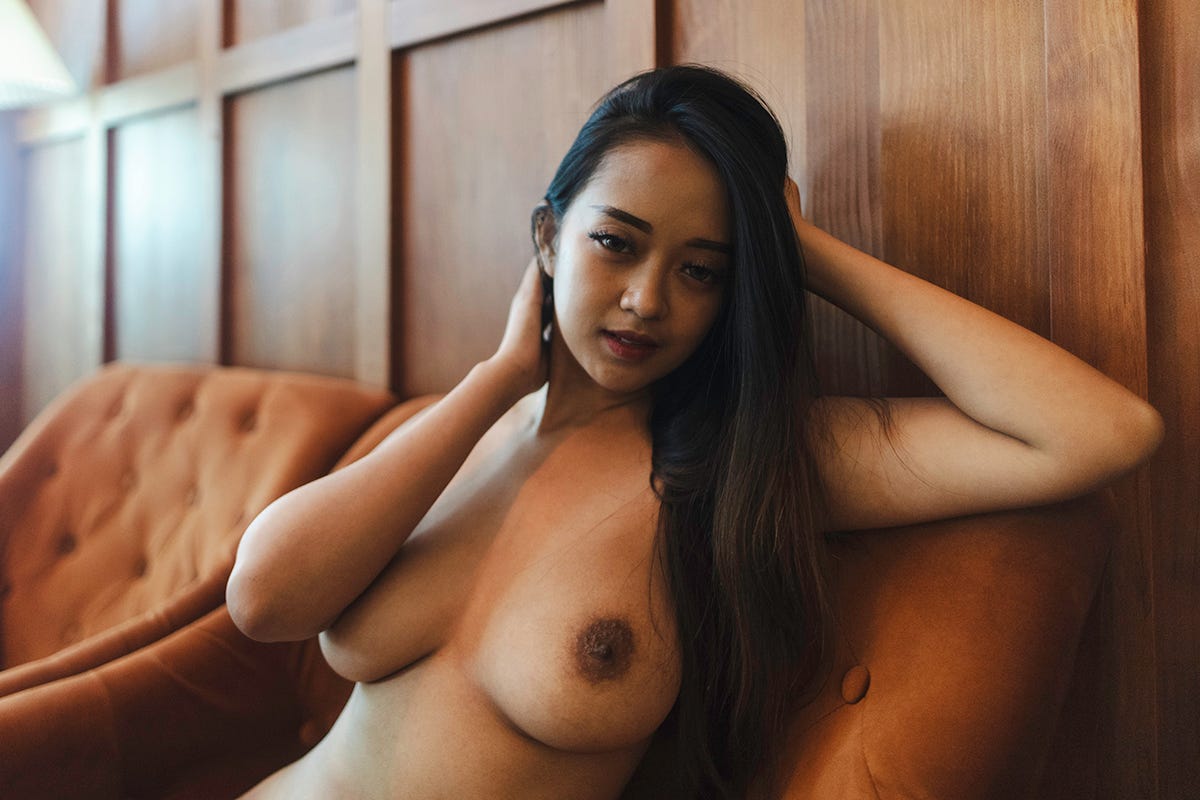
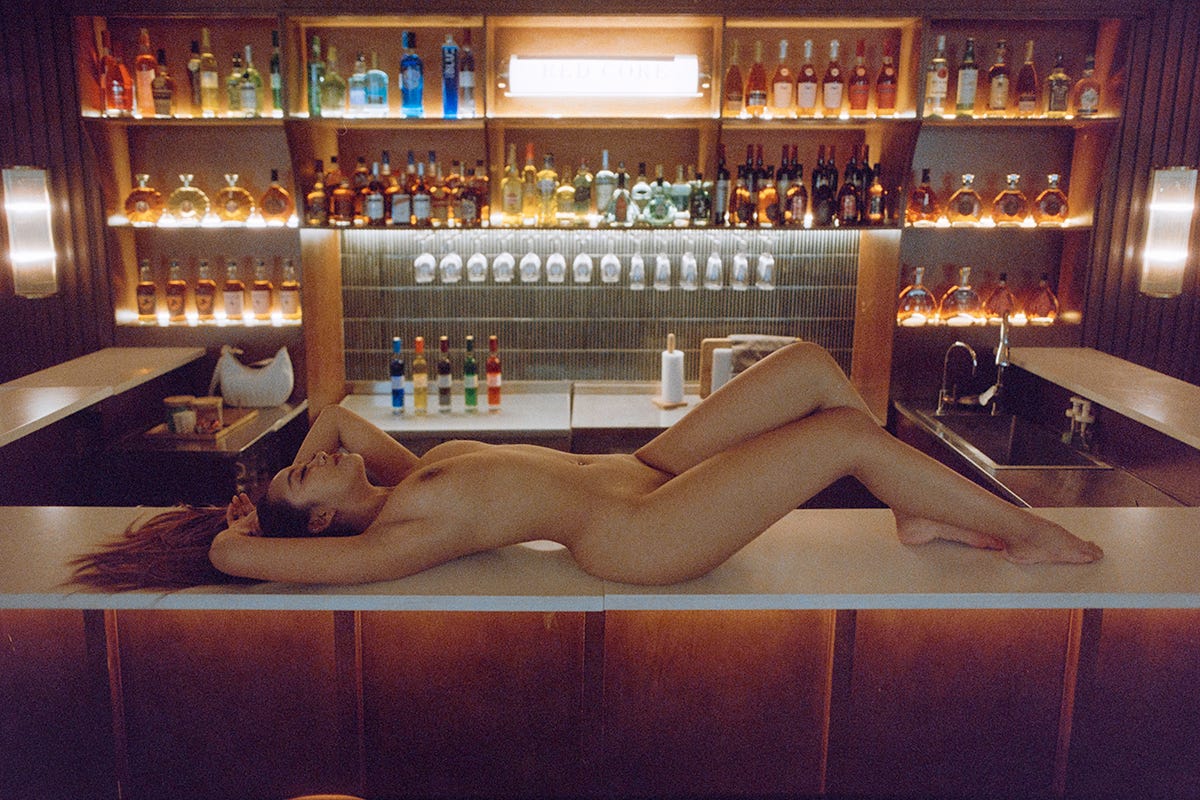
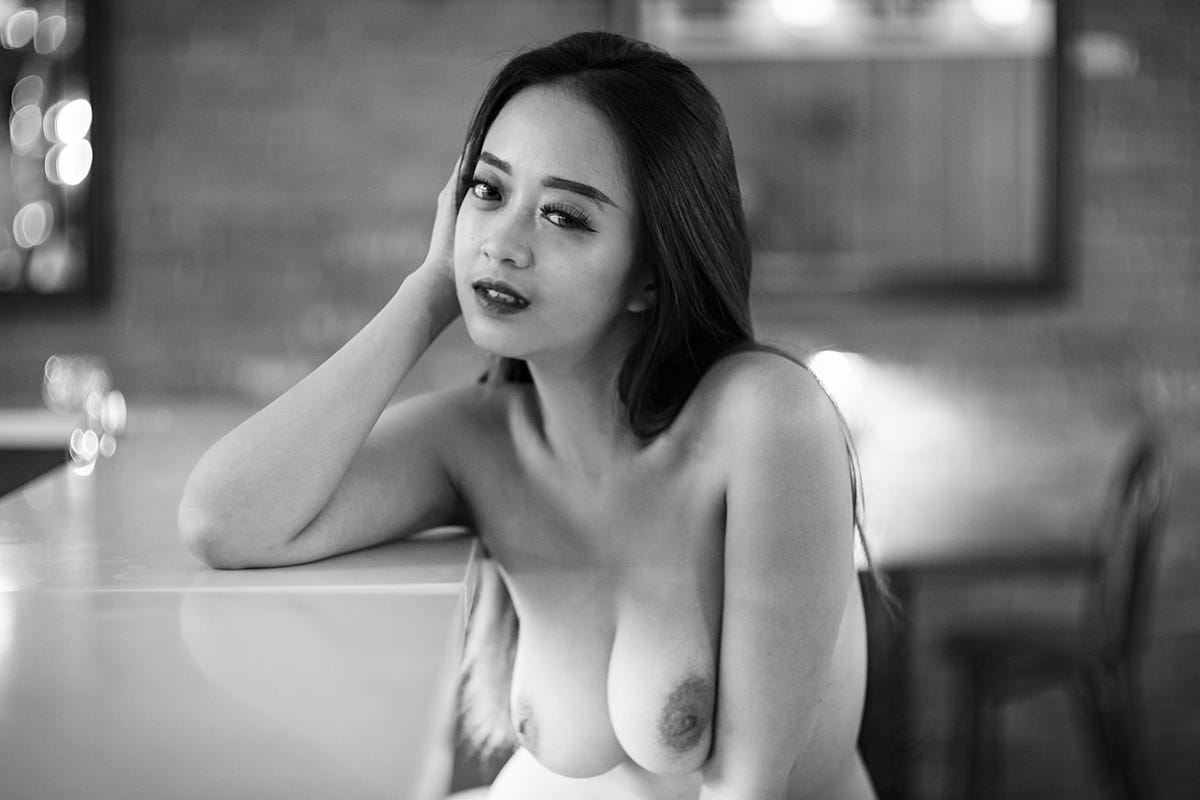
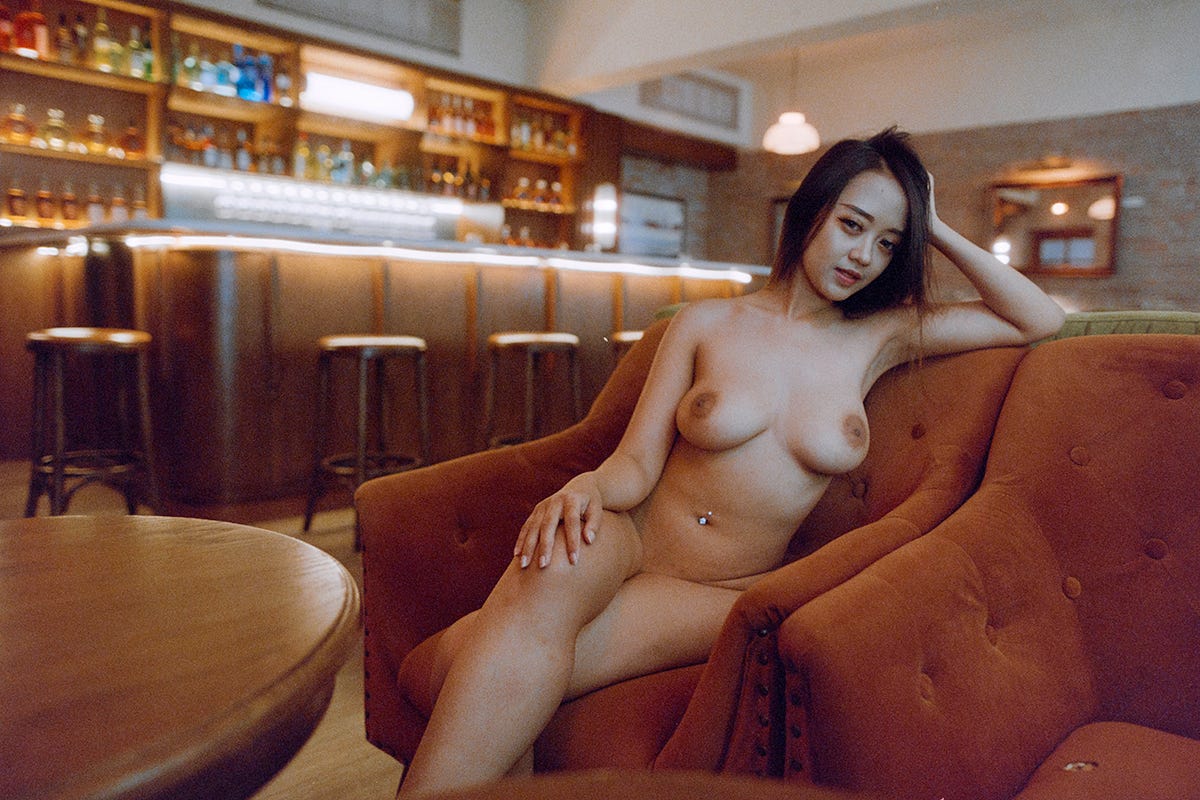
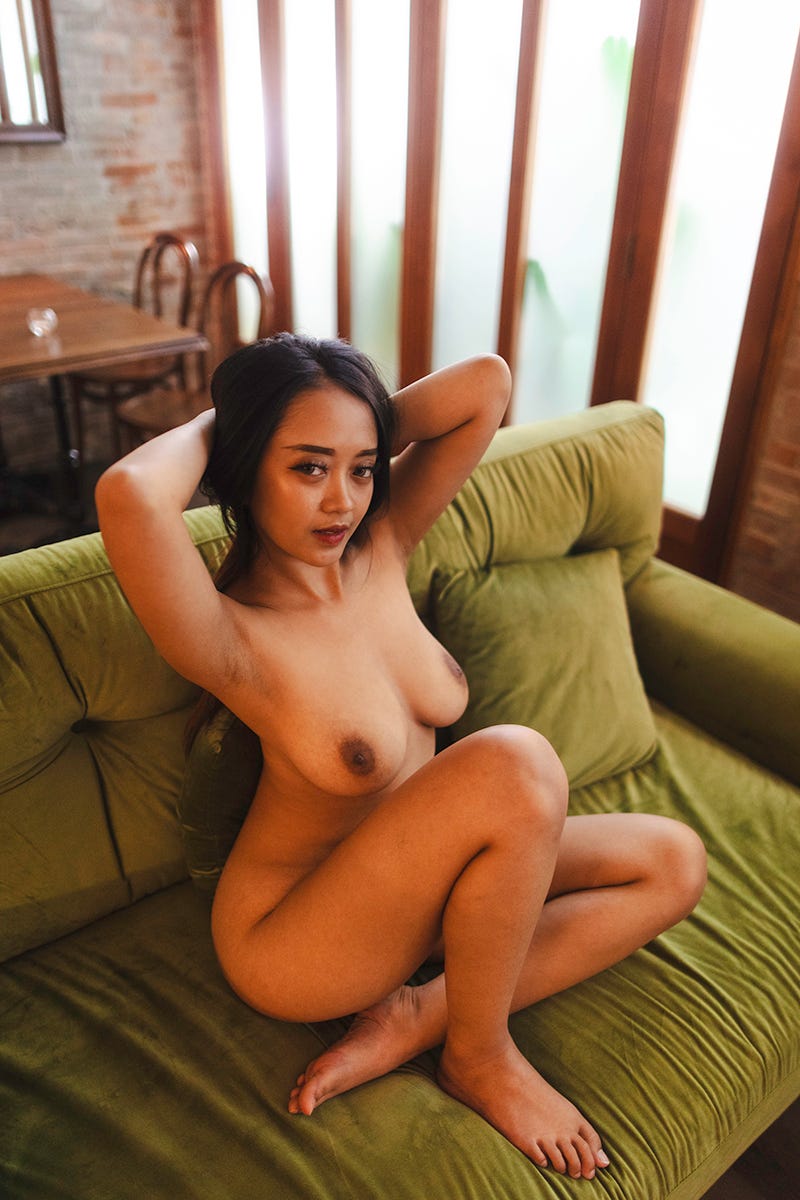
Dude seriously why you go out of your way to make your shoots so complicated?
Just shoot with the one camera you know best.
No in-body stabilisation? I'm nearly 72 and I've just taken a handheld shot at ISO 200 - 1/10s - f4.5 on a 17mm Olympus lens using window light through a vertical blind. To be fair I was sitting down but there no reason why you couldn't use a chair or a monopod to help you. In the studio I'll always sit if possible. It puts you at the same level if the model is seated or lying down.
There's light coming into the room from the window, another time you could spin the sofa around so the light fell on her?
If you're overloading your brain with all these problems how can you enjoy the shoot, make it as easy for yourself as possible.
Greg Williams who shoots Hollywood celebrities will tell you any light will do even the courtesy light in a car will add something. He's on YouTube have a look.
Gorgeous girl